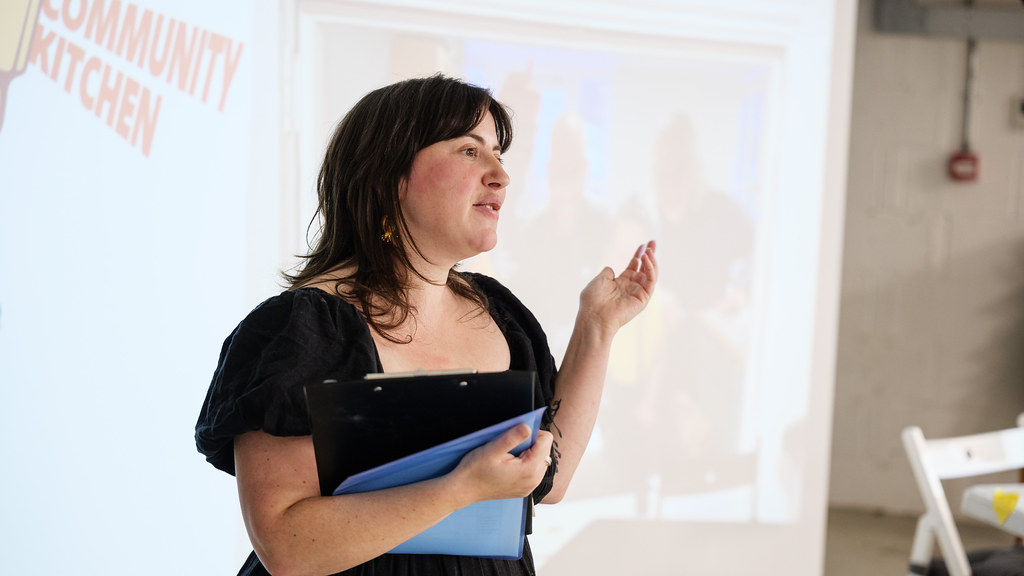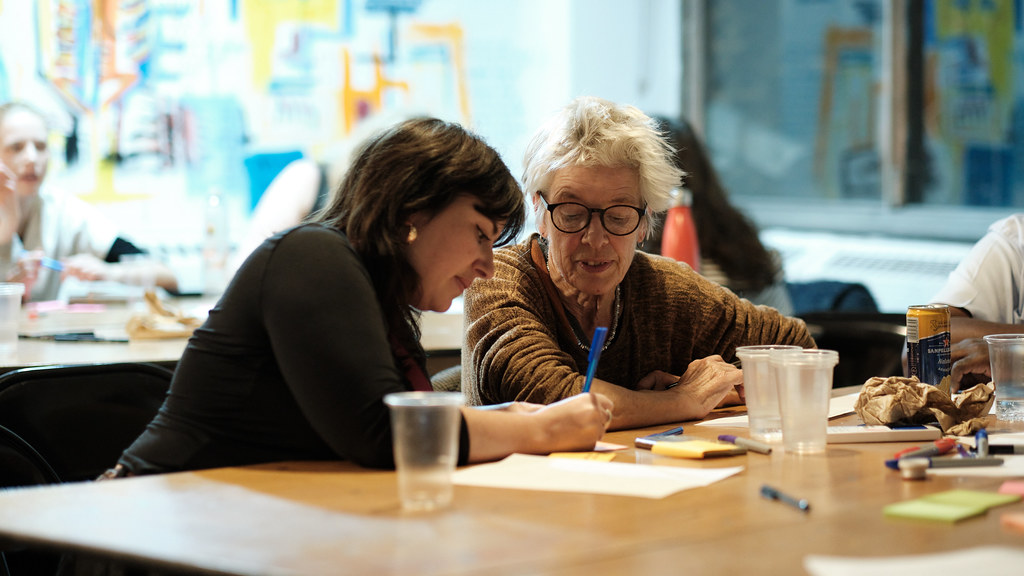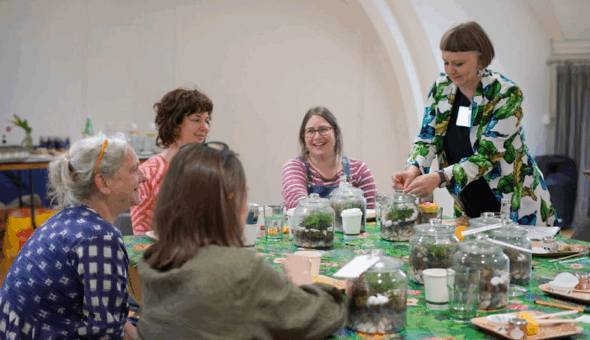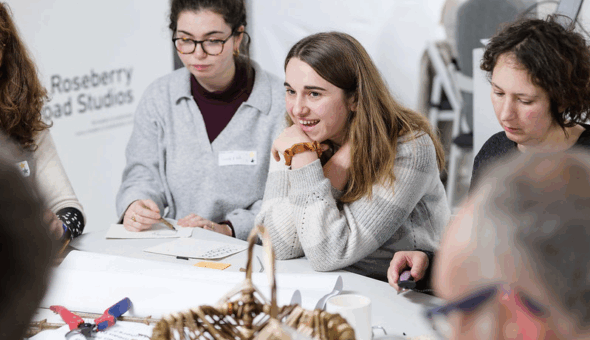I joined the Public Engagement Unit back in March 2024 and as it is coming up to a year of my time in post, I wanted to share some of my reflections and learnings over this time.
Why a community connector role?
I joined the team last year as Project Officer ParticipatoryResearch@Bath project, which has been working to understand and enhance how we involve people meaningfully and equitably in our research.
During phase one, we undertook a series of listening exercises with communities and organisations across Bath and North East Somerset (B&NES). People told us what they wanted from the University of Bath, in particular, they wanted:
- a clear ‘front door’ with a person-welcoming them in,
- opportunities to build a relationship rather than doing 'projects',
- the University being present and being seen to get involved with what’s happening in a community.
This role was new for the Public Engagement Unit, and I was fortunate to be able to shape and develop it from scratch.
With this feedback in mind and taking inspiration from similar roles in other universities and cultural and arts organisations, we landed on my role being something of a Community Connector.
My role is about:
- forming and holding relationships and maintaining existing relationships with communities outside the University,
- listening to communities and bringing what I hear back into our work at the Public Engagement Unit,
- creating opportunities to bring researchers and community groups together to better understand each other and potentially develop mutually beneficial relationships.
The main outcomes we’re hoping to achieve with my role are to support communities to get involved or engage in ways that are right for them and advocate internally for a way of working with people and communities that is fair, equitable and reciprocal.
My first months out and about

In the first few months of my role, I focused on connecting with the communities across B&NES.
This involved visiting local organisations, attending cross-sector networking events and learning about the interests and needs of the community.
These engagements have since resulted in meaningful collaborations, such as linking organisations with University researchers, commissioning local venues and caterers for events, consultation work, community contributions to our Engage & Involve funding calls, the development of training programmes, and even shaping the themes and panels of our Minerva Lecture series.
In this post, I’ll expand on these outcomes and the lessons learned along the way. Meeting so many passionate and dedicated individuals has been a privilege, and I look forward to continuing these connections.
Learnings
The value of creating shared platforms
As community insights emerged, they began to shape our Minerva Lecture programme. Working alongside my colleague Rob Cooper, we designed a programme that aligns with the interests of both our researchers and the wider community.
This has built upon the work Rob has been doing to move the Minerva Lectures away from a traditional lecture format into a more engaged platform where voices from within and beyond the University can come together to discuss topics important to researchers and communities.
Examples of this were our events on loneliness and climate anxiety. These events have featured a diverse range of speakers, from eco-poets and photography-for-wellbeing teachers to professionals working on the frontline of health and social care.
This collaborative approach has created enriching conversations, offered diverse perspectives, and drawn in varied audiences. We have also created spaces for attendees to connect with one another afterwards.
Shared platforms like this hold immense value—they allow community groups and researchers to step outside their usual circles, connect with others, and add depth and nuance to discussions about issues that resonate with wider public groups.
How learning something new together sparks collaboration
In response to both conversations with researchers and local community organisations, as well as a need demonstrated through several applications for our Participate Grants, we developed a training session on measuring and evaluating social impact. Working with Stacey Pottinger from Octopus Impact, we ran our first session in July 2024, and due to the success and popularity of the first, we offered master classes at our Festival of Social Sciences Research Assembly, and a second course was delivered in November 2024.
You can read more about the training, what it looked like and who attended on our social impact training blog, but for the purposes of this blog, I wanted to share the key learning I took from these trainings.
For me, I saw first-hand the value of creating learning environments that bring researchers and community organisations together. We had participants from various organisations and disciplines, but the fact that the participants were all learning something new together levelled the playing field from the start. This meant people were open to sharing challenges and encouraged cross-pollination of problem-solving and sharing of ideas. Within both iterations, the collaboration was rich, and participants stayed connected beyond the course.
Making time and space for connecting (with no fixed outcome) is vital
Another initiative I have been working on has been the introduction of Connect! events. Many researchers and community organisations have expressed a desire for informal opportunities to meet each other. Taking inspiration from UCL’s Creating Connections events, we partnered with Bath Spa University to host a gathering that brought together researchers from both universities, community organisations, creative practitioners, and others from across B&NES.
This was held outside of the university at Roseberry Road Studios with delicious food from the local social enterprise Bath Community Kitchen and was based around the broad theme of Health and wellbeing.
The event was a sell-out and success, with a diverse mix of professions in the room, conversations flowing and connections made beyond the day.
What I’ve learned from this experience and the feedback I received is just how valuable it can be to curate relaxed, informal spaces where people can meet without the pressure of fixed outcomes. These settings allow relationships to develop organically, paving the way for meaningful connections and potential collaborations. Given the success and enthusiasm for our first Connect! the event, we will continue hosting them—the next one is already planned for Tuesday, 25 March 2025.
What’s next?
Over the next few months, I will be channelling my learnings so far by creating more opportunities for connections to grow, for platforms to be shared and for researchers and community groups to collaborate and learn from and with each other.
Thank you to everyone I’ve met so far, both within and outside of the University, who have met with me for coffee, come along to events, training and lectures, and, most importantly, given their time over the last year, it’s made a huge impact on my role and our learnings at the Public Engagement Unit.
If you want to chat about my work or role or how we can support you to connect with a researcher or a community group, then please do get in touch at public-engagement@bath.ac.uk.
My role is funded through the Participatory Research funding allocation to the University of Bath from Research England.
Laura Steen is ParticipatoryResearch@Bath Project Officer at the University of Bath.




What a wonderful testimony to the outreach programme! Laura so clearly sees the bigger picture. Bravo!